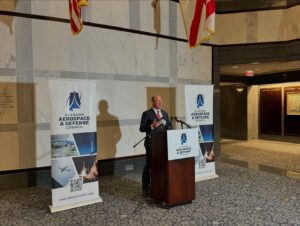William Haupt III: If all government is local, so are elections

“In local government, you are only a few blocks away from those that you serve.” – Valerie Jarrett When you have a street light that goes belly up, a stop sign that’s hidden behind an untamed tree, or an intersection you cross daily with a prayer in heart, who do you turn to for help? Rather than shift through volumes of unfriendly municipal websites, you contact your local county or city official. When local elections are held with no state or federal races, they are a mere afterthought. Voters either don’t know there is an election or don’t care. Even when they are held during the general election in November, far too often, it is only special interests that know the issues and know the candidates. Turnout for presidential elections is considered low when it dips below 60% and in midterms when it is less than 40%. Yet local elections that draw a shameful 10% or 20% turnout are common across our nation. Turnout for local elections has always been historically low, but recent data show that it is getting even worse. “Elections are determined by people who don’t show up.” – Larry Sabato If it is so important who serves on your county commission or on city council, why is there such a low voter turnout for these offices? The number one reason why turnout is low for local elections is simply: most voters don’t even know there is an election, who is running, or where or when to vote? The 1965 Voting Rights Act states it is disenfranchisement not to inform voters of an election. Yet counties and cities either don’t know this or care. A Portland State University study finds the few who always vote are older and more affluent, while all others make up a fraction of the electorate. The Portland study found less than a third of voters cast ballots during a local election. This is easy to comprehend when voters aren’t notified of an election. If the election is not held during a general election, less than 50% of the electorate is even aware there is a local election and who is running. Our system doesn’t make it particularly easy to vote. It’s a familiar story. Most municipal elections are held during odd-numbered years, far away from November. Only five states, Arkansas, Oregon, Kentucky, Nebraska, and Rhode Island, hold local elections in November or with general elections. If local elections are held during a primary or general election, it is the candidates who are notifying voters about the election – begging people to vote for them, not the county or the city governments. “The only people bound by campaign promises are those who believe them.” – Christopher Hitchens Local governments started holding elections separately from state and federal elections during the 20th century Progressive Era. They hoped this would keep state and local elections from being overshadowed by national partisan races. That’s still an argument used today. But if we look closer, the devil is in the details. As the late, great Paul Harvey use to say, “Now for the rest of the story.” In her book, “Timing and Turnout,” Berkeley political scientist Sarah Anzia notes that not much has changed in local elections. “A small subset of voters who tend to be wealthier and older are those who vote during stand-alone municipal elections.” This enables special interest groups to “capture” local elections. “If something is broken but works for the right people, they won’t fix it?” – Gary Martin Rice University’s Melissa Marschall, head of the Local Elections Project, noted local governments are in no hurry to reform local elections. “When the political machines ran municipalities, isolated elections decreased the influence of immigrants breaking the political machines. When fewer non-English speakers turned out, this effectively allowed governments to shelter the political machines.” Marschall noted it is no accident that many “local school district elections” are held in standalone years. Since these elections draw so few voters to the polls, it is far easier to elect union-friendly candidates. She notes by isolating school district elections, they can limit turnout to supporters. The average teacher salary is 3% higher in these districts than in those that hold concurrent elections. Marschall believes that, “Holding local elections on separate dates has outlived its usefulness.” And although there is a growing interest for states and municipalities to move local elections to coincide with general elections, there is a lot of local resistance. This is especially true for special interests. Last month the California Assembly approved a bill to force localities with low turnout of less than 25% to move local elections to overlap with state or federal contests. What sounds like a good idea is not welcomed by everyone. There is steep resistance from school boards and local politicians. California State Rep. David Hadley is arguing against holding concurrent elections. He claims that this will hurt those vying for local support since it, “Forces them to compete with state and federal races for money, volunteers, and for voter attention. I believe this will hurt us more than help us.” During the 18th and 19th centuries, “political machines” ran large U.S. cities. They helped organize and build big cities, but they also controlled them. Special interests, business, and elected officials were all intricate parts in the machines. The key to their success was controlling the local elections. “The appearance of the law must be upheld – especially when it’s being broken.” – Boss Tweed Although the “political machines” of the past are gone, they’ve been replaced with political parties. The politics of local elections continues to favor incumbents, and they control local elections. Many of these offices are billed as “nonpartisan.” Party politics or not, it will always be politics as usual. Robert Ingersoll told us, “Ignorance is not bliss; it is punishment.” We hear about what is going on in Congress each day and what our state reps are doing also. But if we want to find


